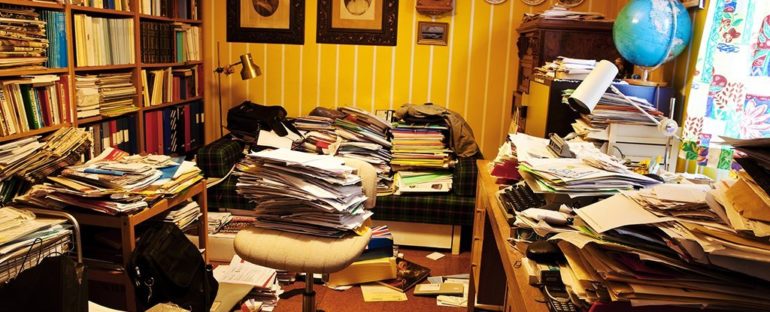Despite often stigmatizing portrayals in TV shows and movies, most ‘hoarders’ don’t fall in line with the dramatic stereotype of living in squalor.
In fact, between 2 and 6 percent of people have hoarding disorder, a mental health condition which often manifests as a coping mechanism when a person is struggling with other conditions, from brain injury to grief to depression. In other words, it’s a lot more common than you think.
Like other mental health disorders, hoarding disorder – while challenging to manage – can be treated with the correct approach. A new scientific article by two psychiatrists and an occupational therapist, all based in Australia, has outlined strategies for health professionals to help those with the condition.
Hoarding disorder was recognized as a distinct disorder back in 2013, in the fifth edition of the Diagnostic and Statistical Manual of Mental Disorders (DSM-5).
The team describes the criteria below:
Difficulty discarding or parting with possessions, regardless of their value.
This difficulty is due to a perceived need to save the items and to distress associated with discarding them.
The difficulty discarding possessions results in the accumulation of possessions that congest and clutter active living areas and substantially compromises their intended use.
The hoarding causes clinically significant distress or impairment in social, occupational, or other important areas of functioning.
The hoarding is not attributable to another medical condition.
If you recognize these symptoms in a loved one, the next step is trying to get them help. However, as the team notes, this is easier said than done.
“One major hallmark of the condition is refusing help, so doctors are in a unique position where respecting the patients’ wishes to be left untreated should not be accepted right away,” the team explains in a press release.
“Instead, gentle, ongoing attempts to help combined with emotional support, even if the person refuses to even open their door, is encouraged.”
MRI scans have suggested that people with hoarding disorders tend to have fewer connections in the brain regions associated with cognitive control, but more connections in the parts that focus on one’s inner world.
This may help explain their inability to process all the meanings they assign to their belongings, and why they can have so much trouble with letting them go.
Hoarding behavior becomes a disorder when accumulation of these possessions starts to interfere with a person’s life or the lives of those around them. While many hoarders are socially active members of society, at its extremes hoarding can lead to squalor – where conditions become unsanitary.
The researchers stress that once help has been accepted, doctors have to first address other problems that might make the hoarding worse. In over 50 percent of cases, hoarding coexists with other conditions, such as mental disorders like depression or alcohol abuse, or physical ailments like arthritis.
“[General practitioners], often with established long-term relationships with their patients, can play an important role in both the detection and management of hoarding and squalor,” the researchers write in their paper.
“A coordinated approach should be provided to ensure the home is safe for the patient, others living in the same residence, and any carers. This can include developing safety goals with the individual, and regular home-visit support to declutter key areas, motivational interviewing, emotional support, and physical assistance or cleaning if the person is frail.”
The researchers recommend cognitive behavioral therapy alongside targeting specific emotional attachments and patterns. They also highlight some early studies investigating certain drugs, like those that help with OCD, that may also help with treating hoarding disorder, although the number of people in these studies is usually very small and more research needs to be done.
Finally, in Australia, where the researchers are from, there are support groups such as Buried in Treasures, where those struggling with this condition can learn coping skills and find others who understand what they are experiencing.
“Severe hoarding disorder and squalor are complex and challenging to manage. These conditions can often be debilitating for a person and their family,” the team writes.
“A multiservice, multidisciplinary approach is often required. Medical, social and ethical dimensions need to be considered, and ideally clinical and environmental assessments should occur.”
The research has been published in Australian Prescriber.



